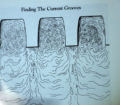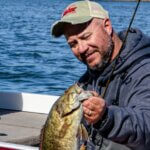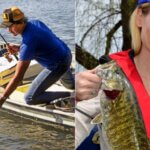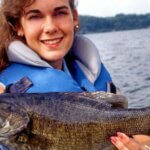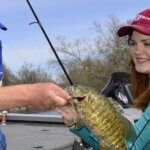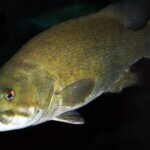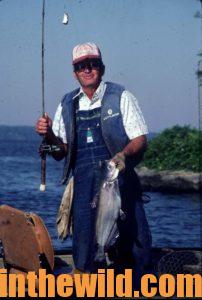 Editor’s Note: Bubbling and swirling, the swift waters of tailraces make anglers think of catfish, feeding in the current’s boils and foam in the highly-oxygenated water. But sometimes those catfish are hard to catch. Several friends of mine have solved the riddle of taking tailrace cats, after perfecting their catfish strategies on the Tennessee River that runs through Tennessee and Alabama. For more than 20 years, they have spent several days a week in the tailrace area watching anglers catch catfish as well as taking catfish themselves. Their tactics will work in tailraces throughout the nation. The key to catching catfish in tailraces is being able to read the water and knowing just where the catfish are. Although catfish roam most tailraces areas below dams because of the abundant baitfish in the water and the highly-oxygenated flow coming through the turbines, some parts of a tailrace will produce more catfish than others. However, productive spots may switch abruptly.
Editor’s Note: Bubbling and swirling, the swift waters of tailraces make anglers think of catfish, feeding in the current’s boils and foam in the highly-oxygenated water. But sometimes those catfish are hard to catch. Several friends of mine have solved the riddle of taking tailrace cats, after perfecting their catfish strategies on the Tennessee River that runs through Tennessee and Alabama. For more than 20 years, they have spent several days a week in the tailrace area watching anglers catch catfish as well as taking catfish themselves. Their tactics will work in tailraces throughout the nation. The key to catching catfish in tailraces is being able to read the water and knowing just where the catfish are. Although catfish roam most tailraces areas below dams because of the abundant baitfish in the water and the highly-oxygenated flow coming through the turbines, some parts of a tailrace will produce more catfish than others. However, productive spots may switch abruptly.
Another kind of groove that successful tailrace fishermen learn to find is a rock groove, but you must use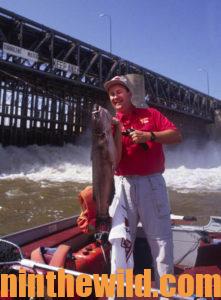 a quality depth finder for success. Assume that the bottom of the tailrace isn’t flat, because most tailraces have rocky bottoms. Use the depth finder to spot the big rocks on the bottom. Once you find the rocks, though, you can’t mark them with buoys due to the swift water. Therefore, remembering the location of these submerged rocks is important to your catfishing success, and that’s why you need a depth finder.
a quality depth finder for success. Assume that the bottom of the tailrace isn’t flat, because most tailraces have rocky bottoms. Use the depth finder to spot the big rocks on the bottom. Once you find the rocks, though, you can’t mark them with buoys due to the swift water. Therefore, remembering the location of these submerged rocks is important to your catfishing success, and that’s why you need a depth finder.
You can anchor your boat upstream of the rock groove, bump the bottom back to the rock and let your bait wash around the rock. Then bump the bait back down the groove until you catch a cat. Both tactics work equally well. Another advantage is that the underwater rock grooves aren’t visible, so most anglers never figure out how you’ve managed to catch catfish – even if they are fishing right next to you.
Best Rigs For Groove Fishing:
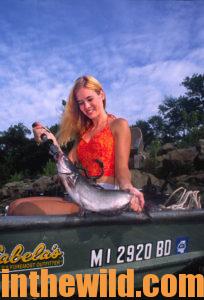 The late Kyle Baggett of Cullman, Alabama, was a tailrace specialist in taking catfish for over 30 years. Baggett knew catfish and their habits. No matter what the water or weather conditions, or whether the fish were feeding, Baggett brought in 50 to 100 pounds of cats every day. In addition to advocating groove fishing, Baggett believed that proper rigging was a key to successful tailrace catfishing.
The late Kyle Baggett of Cullman, Alabama, was a tailrace specialist in taking catfish for over 30 years. Baggett knew catfish and their habits. No matter what the water or weather conditions, or whether the fish were feeding, Baggett brought in 50 to 100 pounds of cats every day. In addition to advocating groove fishing, Baggett believed that proper rigging was a key to successful tailrace catfishing.
Baggett, used a bottom-bumping rig, consisting of a 4- to 5-ounce weight and an 8-inch, 20-pound-test
monofilament drop line, both attached to the eyes of a three-way swivel. The weight was attached 12 to 18 inches below the swivel. To the drop line, Baggett attached either a No. 1 or a No. 2 bait-holder hook. A barrel swivel between the hook and the swivel’s eye kept the bait from twisting the main line as it rolled in the current. He liked a bait-holder hook because it would hold the gizzard shad gut that he usually used in fishing the tailrace. Baggett would run the hook through the shad’s entrails, sliding them up the hook’s eye.
 To complete the rig, Baggett would tie on another three-way swivel about 10 inches above the first. A 6-inch leader and hook was attached to this swivel. No barrel swivel was needed here because the three-way swivel provided enough rotation. Using the shorter line for attaching the top hook made the top hook ride higher in the water than the bottom hook. Baggett found that catfish didn’t feed on the bottom always. Sometimes they fed just off of it. Then, more catfish would be caught on the top hook rather than on the bottom hook.
To complete the rig, Baggett would tie on another three-way swivel about 10 inches above the first. A 6-inch leader and hook was attached to this swivel. No barrel swivel was needed here because the three-way swivel provided enough rotation. Using the shorter line for attaching the top hook made the top hook ride higher in the water than the bottom hook. Baggett found that catfish didn’t feed on the bottom always. Sometimes they fed just off of it. Then, more catfish would be caught on the top hook rather than on the bottom hook.
Baggett was particular about his rods and usually built his own. The rod had to be stiff, so that the hook would be set hard at the first feel of a cat, even when the current created a bow in the line. He preferred a stiff fiberglass rod with a sensitive tip to allow him to feel the strike but still have the power to set the hook on the catfish.
Baggett’s favorite bait was shad guts, but he named other productive baits for fishing tailrace grooves, 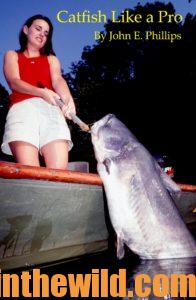 including night crawlers, whole shad minnows, chicken livers and cut shad. The rule of thumb in selecting a bait for fishing the grooves was and still is to choose one that catfish are accustomed to seeing and feeding upon along the bottom.
including night crawlers, whole shad minnows, chicken livers and cut shad. The rule of thumb in selecting a bait for fishing the grooves was and still is to choose one that catfish are accustomed to seeing and feeding upon along the bottom.
To learn more about catching catfish, check out John E. Phillips’ book, “Catfish Like a Pro,” available in Kindle and paperback, at http://amzn.to/W900eu. You can also get a free eBook copy of “The Catfish Catcher’s Cookbook” at https://johninthewild.com/free-books.
Tomorrow: Fish Tailraces With Jugs for Catfish

